Key Facts
- The Godzilla franchise is the longest-running movie franchise ever, with 38 films out and Godzilla Minus One releasing at the end of this year.
- Godzilla is derived from “Gojira” which translates as gorilla whale, indicating his immeasurable strength and aquatic lifestyle.
- Many Godzilla monsters are combinations of dinosaurs or regular animals grown to kaiju size.
The Godzilla franchise is the longest-running movie franchise in the world. It consists of 38 movies to date, with a new movie and show releasing later this year. Thanks to the recent popularity of Legendary’s Monsterverse and several animated and live-action movies in Japan like Shin Godzilla, the Godzilla franchise is back by popular demand.
Experienced fans anticipate how the moviemakers will reintroduce old monsters, while new fans wonder what creatures Godzilla will be paired against. With nearly 40 movies in the franchise, there are plenty of monsters to cover, all of which are inspired by dinosaurs and real-life animals. Follow along, as we discuss the real-life animals that inspired the Godzilla franchise.
Godzilla
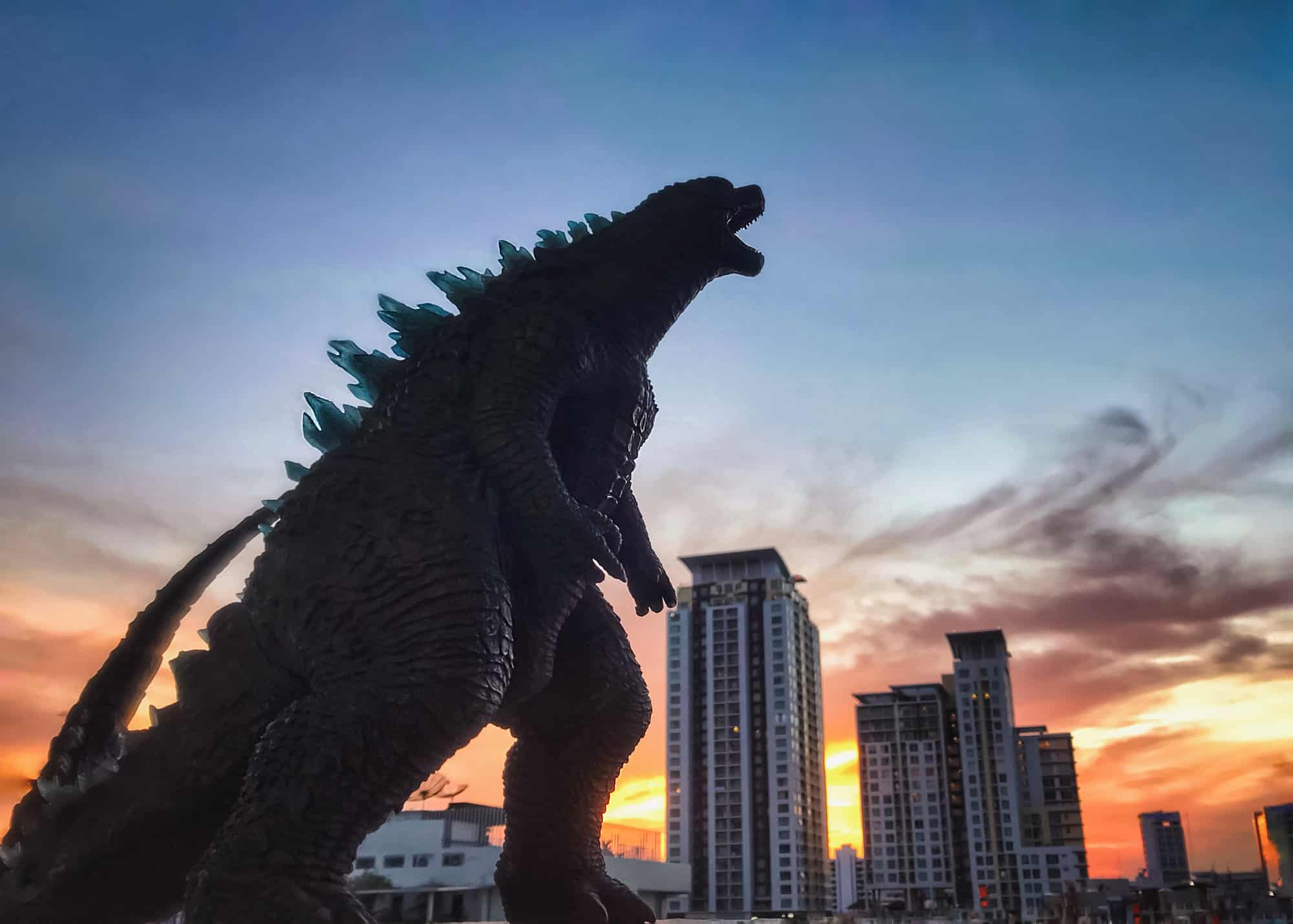
Godzilla is a metaphor for the fear of nuclear weapons inside the body of a powerful animal.
©Phoenix Pixels/Shutterstock.com
The first explanation goes to the King of Monsters, the titular character, Godzilla. Godzilla’s origins change from each film era, with the original movie making him an allegory for nuclear destruction, and other movies depicting him as a force of nature. Regardless, his general aesthetic remains consistent throughout most incarnations.
Later films commonly depict Godzilla as an actively thinking and territorial animal capable of problem-solving, using weapons, and exploiting weaknesses in opponents or machinery.
Several animals inspire Godzilla. He has the:
Mothra

Emperor moth wings have similar eye patterns as Mothra to look beautiful and deter predators.
©iStock.com/Simon002
The benevolent deity who protects humankind and Queen of the Monsters, Mothra is the monster that will lay down her life to protect all life on Earth. Staring in her own film at first, she migrated into the Godzilla franchise and became a popular staple of the series, serving as both an ally and opponent to Godzilla.
Mothra larvae (and sometimes adults) can shoot silk as a method of offense to trap opponents or spin a cocoon for herself to transform. Adult Mothra can release pollen from her scales, which can incapacitate other kaiju at the cost of her wing integrity. Additionally, Mothra can reincarnate by laying an egg to succeed in her lineage.
Mothra’s design is inspired by:
- Silk moth string, which is comparable to steel
- Emperor moths, which have unique patterns on their wings to trick predators
- The scales on moth and butterfly wings that cause eye and skin irritation
- A phoenix’s ability to reincarnate upon death
Rodan
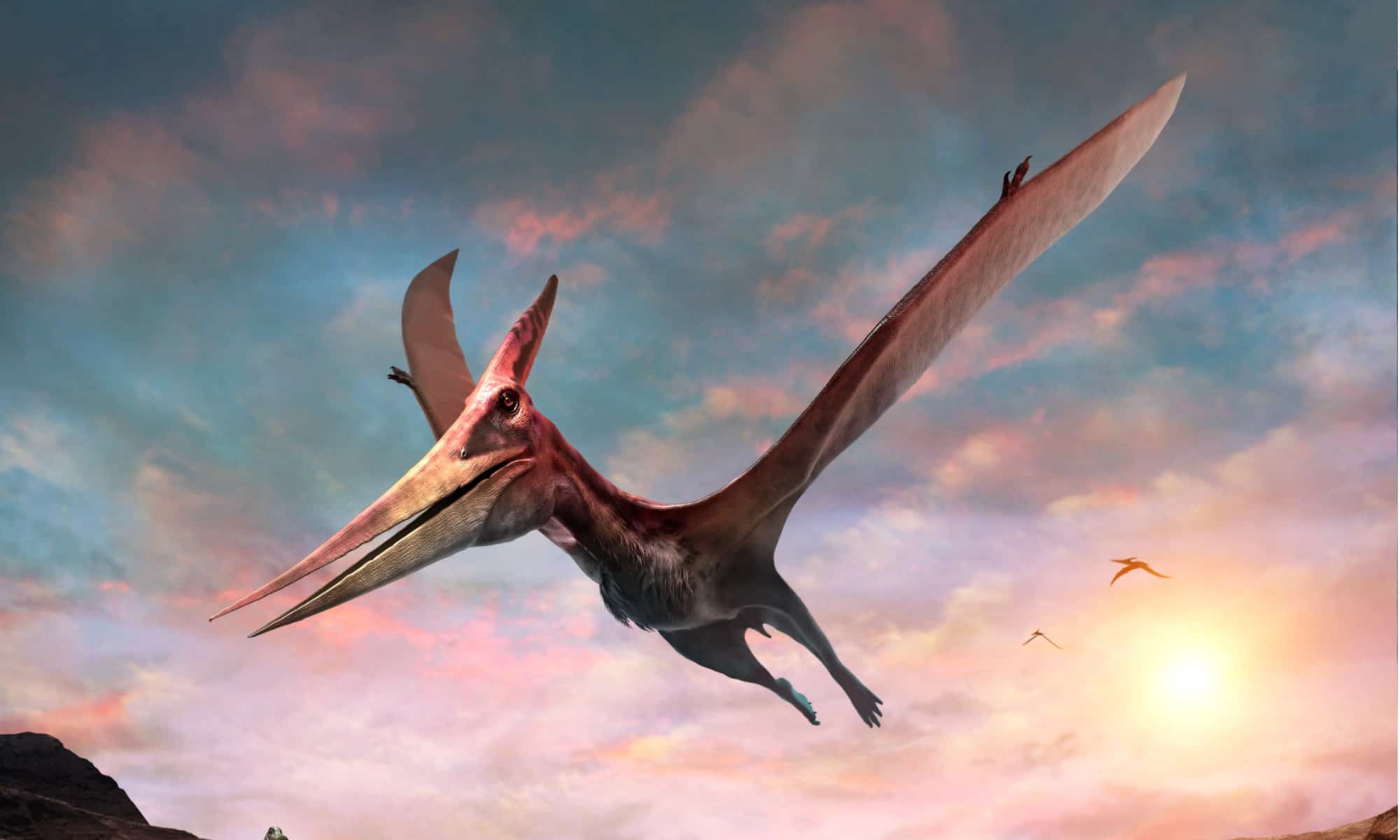
Pteranodons are a portmanteau for the kaiju Rodan.
©iStock.com/Warpaintcobra
Initially starring in his own movie, Rodan is a popular kaiju that was linked to the Godzilla franchise in the 1960s. Rodan is another monster that serves as both an ally and opponent to Godzilla, showcasing the natural rivalry between reptiles and birds. All incarnations of Rodan are that of a mutated Pteranodon with a reddish tint across the body. By removing a few letters “pteranodon” becomes “radon,” and then “Rodan.”
King Ghidorah
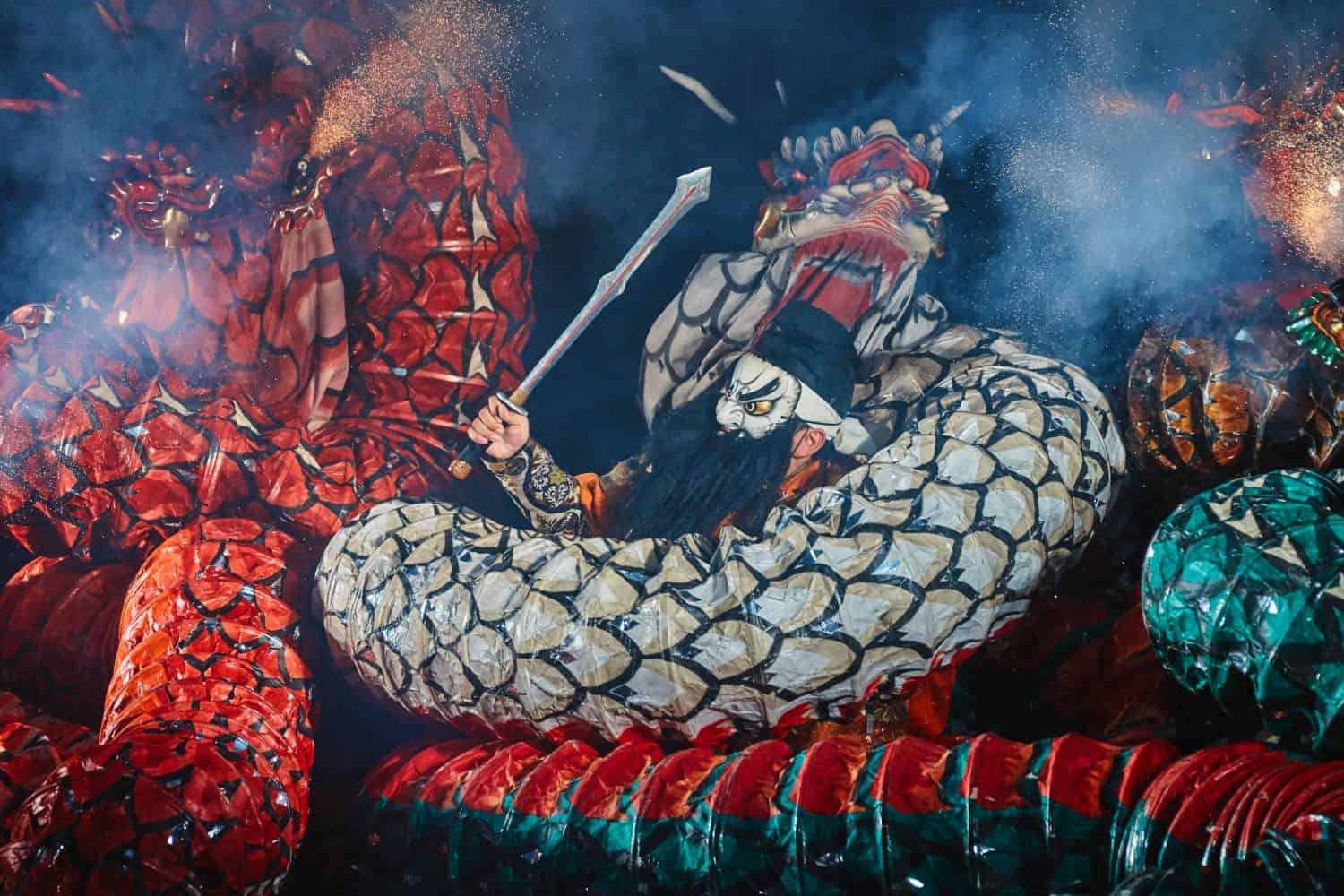
Ghidorah is a golden hydra based on the Japanese Yamato no Orochi, an eight-headed serpent.
©north-tail/Shutterstock.com
One of Godzilla’s main rivals, and the monster that brought Godzilla, Mothra, and Rodan together into one franchise is Ghidorah. King Ghidorah is a towering golden hydra with three heads, two tails, giant wings, and the ability to shoot lightning from its mouths. It is Godzilla’s biggest rival, usually seen as an invasive species coming to conquer Earth or a weapon aliens use to counter Godzilla.
Ghidorah is a chimera of several animal parts, including:
- Heads of Eastern dragons
- Wings of a bat
- Tail rattle of a rattlesnake
- Necks of boa constrictors
- Multiple heads like hydras
- Ability to generate electricity like electric eels
Anguirus
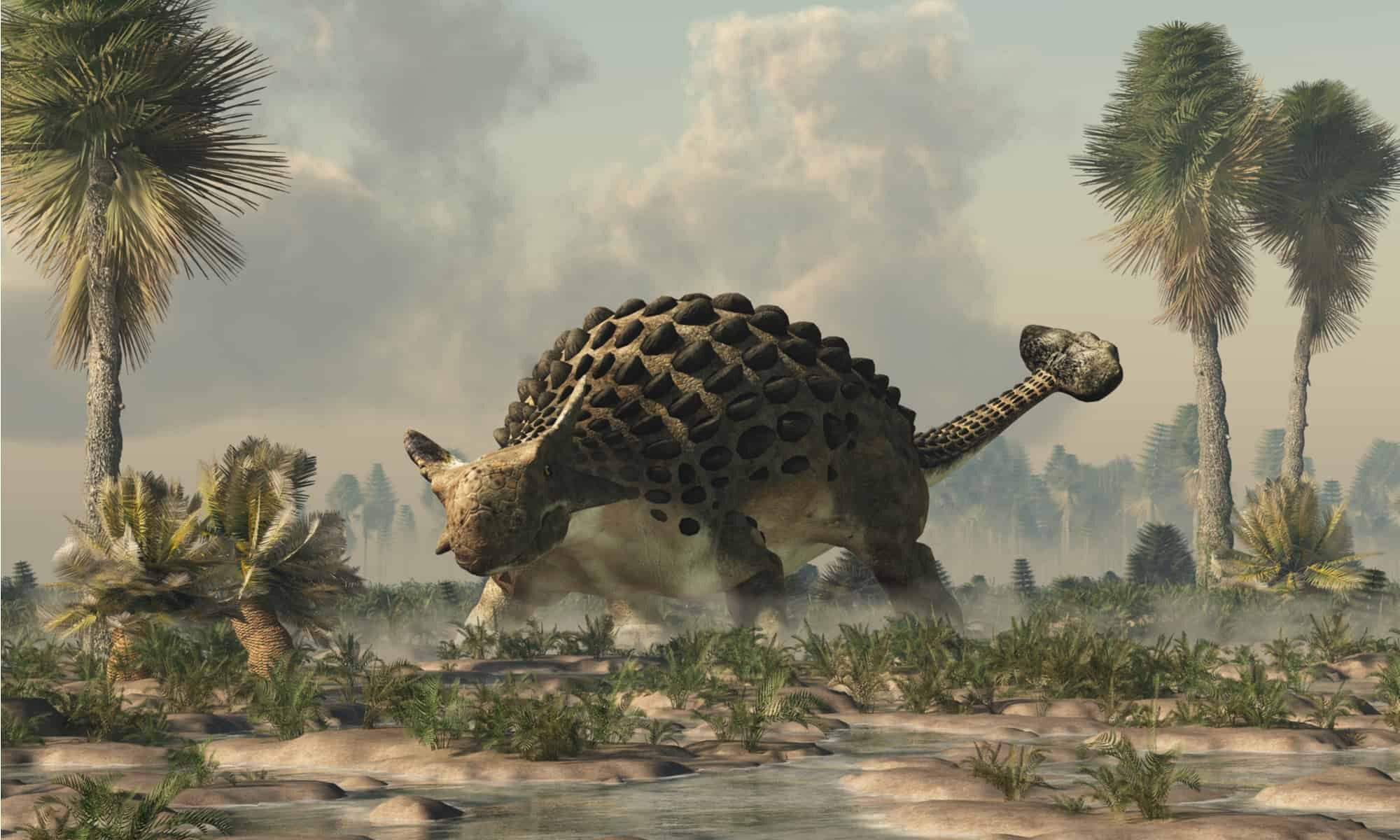
Ankylosaurus and Anguirus both share a hard carapace to protect them from predators.
©Daniel Eskridge/Shutterstock.com
Anguirus is a quadrupedal kaiju that served as Godzilla’s first opponent, and eventual ally in later films. This monster is tenacious and an aggressive fighter, capable of basic combat skills.
Anguirus is inspired by:
- Ankylosaurus– body and armored hide
- Crocodile– face and snout
- Armadillo– the ability to roll into a ball for protection
- Styracosaurus- spikes on head, face, and back
Kong
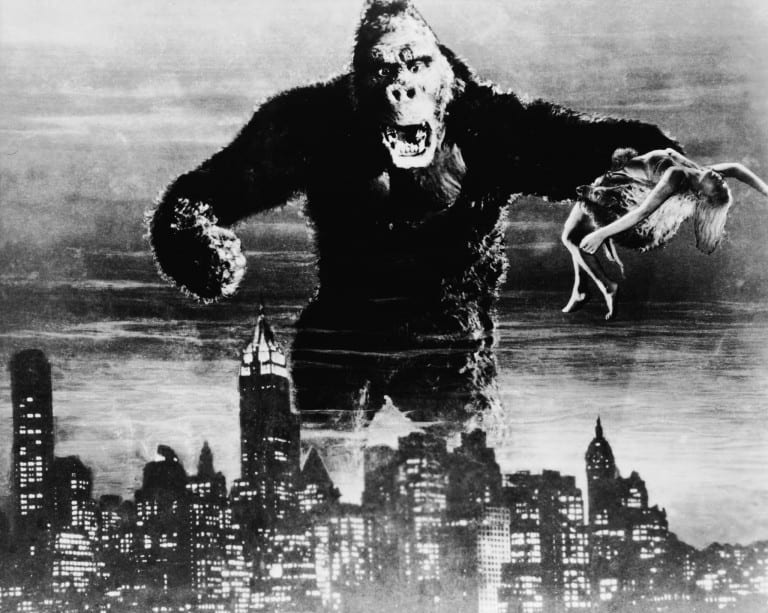
Kong was the second monster Godzilla fought and Toho used him for movies in the future.
©Warner Bros currently owns the rights to the 1933 version of "King Kong", following the demise of RKO in 1959., Public domain, via Wikimedia Commons - License
King Kong is technically not a member of the Godzilla franchise, but they fought once in the 1960s, and again in the Monsterverse’s Godzilla vs. Kong movie in 2021.
Kong is a giant, prehistoric gorilla or Gigantopithecus hybrid, embodying the power, strength, and intelligence of an ape at kaiju size.
Ebirah
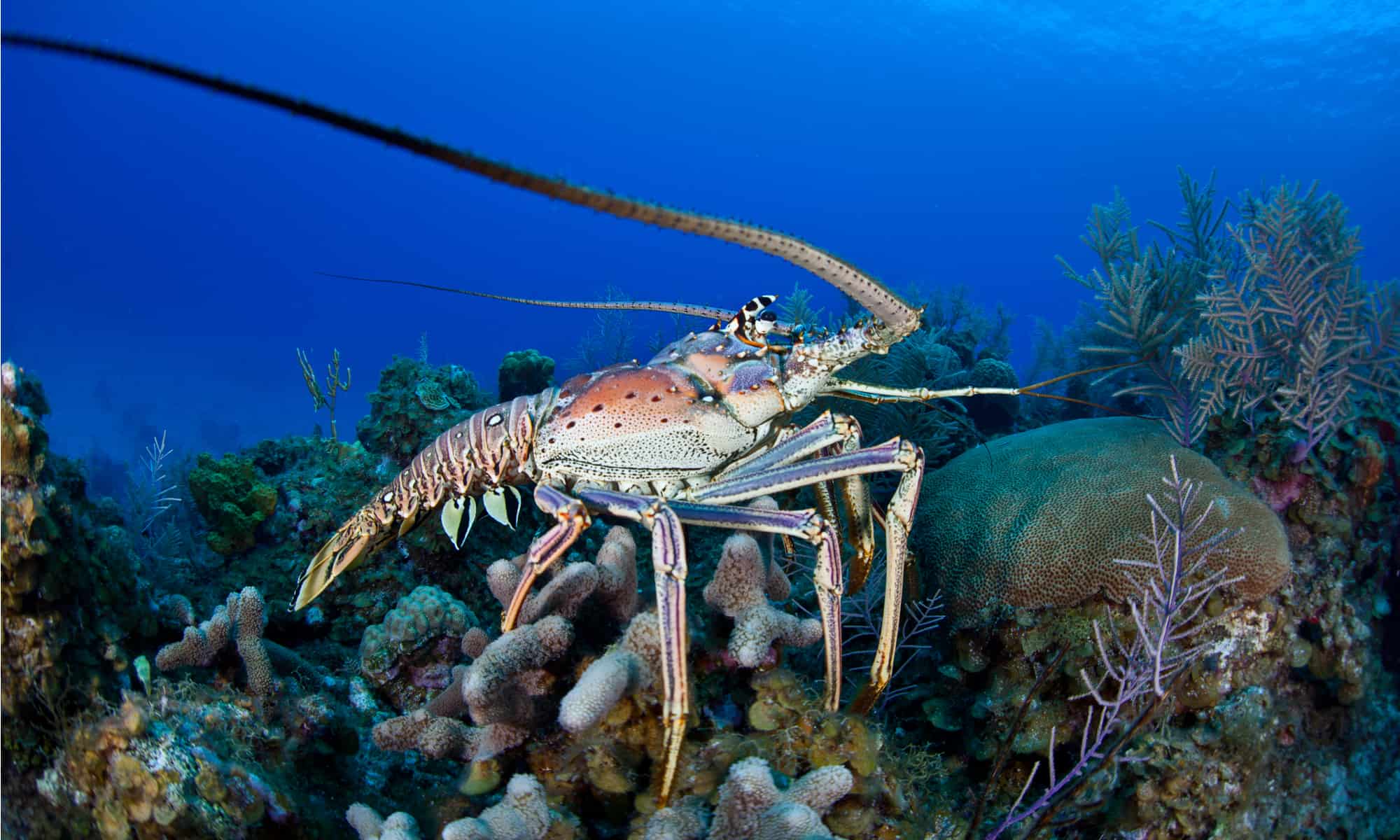
Many
Godzillamovies include jokes about eating Ebirah for his delicious lobster meat.
©Ethan Daniels/Shutterstock.com
This monster is one of several kaiju that are larger versions of basic animals that Godzilla defeats. In Japanese, “ebirah” translates to “shrimp” or “lobster.” Thus, Ebirah is most likely a Japanese spiny lobster, which can reach 12 inches long.
Kamacuras
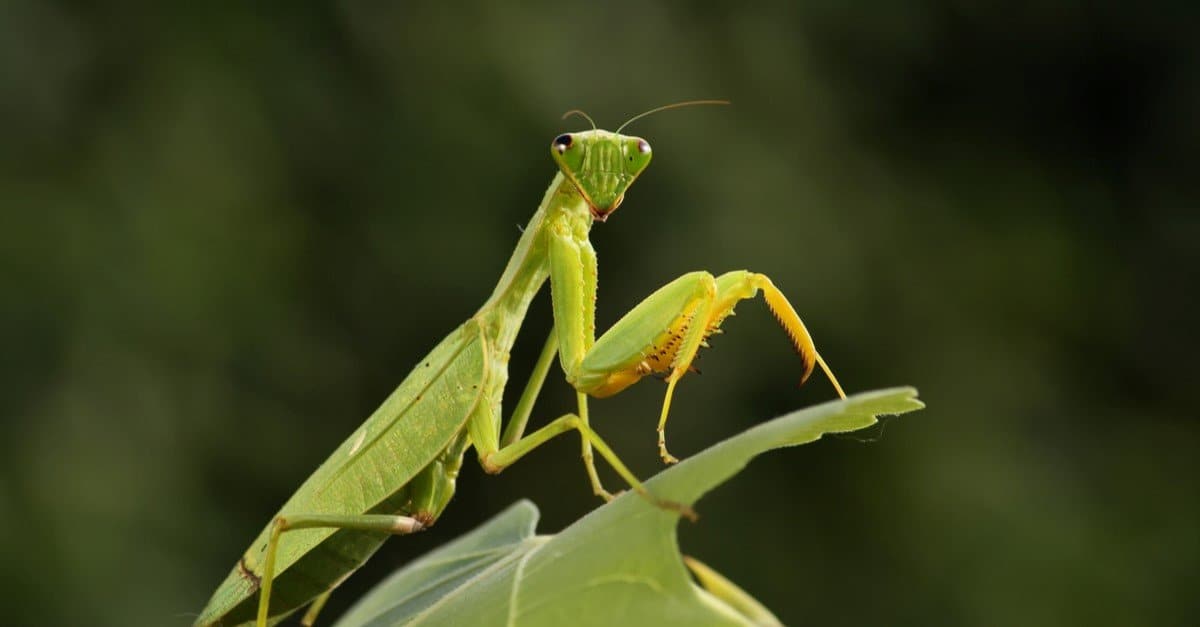
Kamacuras and praying mantis are agile fighters but often overpowered by larger prey.
©Karel Bartik/Shutterstock.com
In Japanese, “kamikiri” translates to mantis, making Kamacuras a giant praying mantis. Kamacuras is a lesser antagonist in movies, posing little threat on its own, but they can be difficult in swarms or for younger kaiju like Minya/Minilla (Godzilla Jr.)
Kumonga

Joro spiders are highly venomous and people are warned to stay clear of them.
©David Hansche/iStock via Getty Images
First appearing alongside Kamacuras, Kumonga is a giant spider kaiju that inhabits Monster Island. Kumonga feeds on humans and other kaiju like Kamacuras that are caught in its webbing. In Japanese, the word for spider is “kumo,” thus Kumonga is a generic giant spider.
Kumonga’s color resembles the Joro spider, which is yellow, blue, red, and highly venomous. The Joro spider is based on the Jorogumo, a yokai spider that shapeshifts into a beautiful woman to lure in prey.
Gorosaurus

Theropods are popular dinosaurs because they are strong predators that walk on two legs.
©Lord Beard/Shutterstock.com
Appearing as an opponent to Kong in King Kong Returns, Gorosaurus became an ally to Godzilla and the other kaiju on Monster Island, eventually working with them to defeat King Ghidorah and stop an alien invasion in Destroy All Monsters.
Not as popular as the other kaiju, Gorosaurus has a basic design of many theropods like allosaurus and tyrannosaurus rex who have strong hind limbs and jaws, but small front limbs.
Additionally, Gorosaurus can lean back on his tail and drop-kick opponents like kangaroos.
Baragon
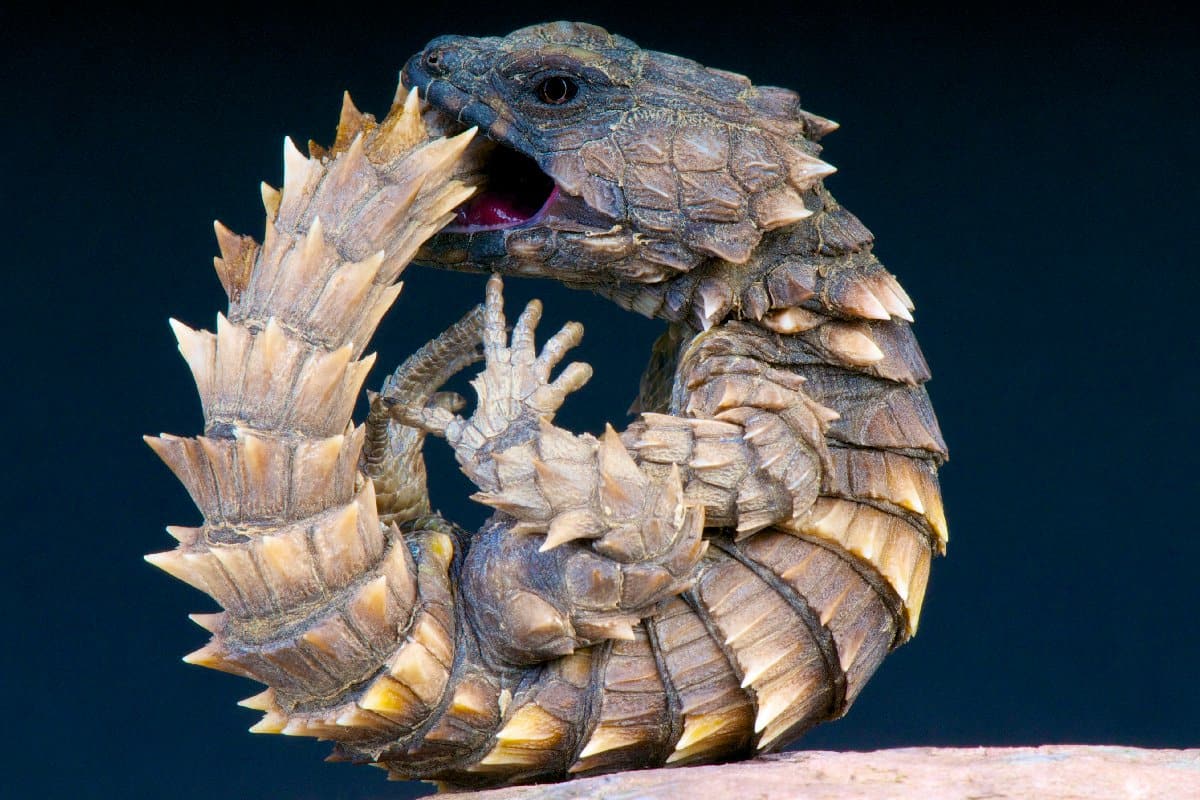
Spiny armadillo lizards are exotic animals that can be owned as pets.
©iStock.com/reptiles4all
Baragon is a red, small quadruped kaiju that appeared in the 1960 movies fighting a Touhou version of Frankenstein but is most notable for its role in Godzilla, Mothra, Ghidorah, All Out Attack. In this movie, it served as a guardian of the Earth and fought a rampaging Godzilla. Baragon’s name refers to the rose petal plates on its back.
Baragon is a combination of:
- Armadillo’s ability to dig
- Ankylosaurus’ size and strength
- Armadillo lizard’s horns and body structure
Megalon

Japanese children like to watch rhino beetles fight.
©iStock.com/rawintanpin
A unique monster in the franchise, Megalon is a giant beetle that serves as a god to the fictional undersea people of Seatopia. Megalon went on a rampage across Japan with the space cyborg Gigan but was defeated by Godzilla and Jet Jaguar, the artificial android.
This kaiju is a combination of several insects, with enhanced abilities to dig, shoot beams from its nasal horn, combine its drill hands to dig, and spit bombs from its mandibles.
Megalon is inspired by:
- Japanese rhino beetle – basic structure, nasal horn, and strength
- Cicada – body shape and coloring
- Grasshopper – agility and wings
King Caesar
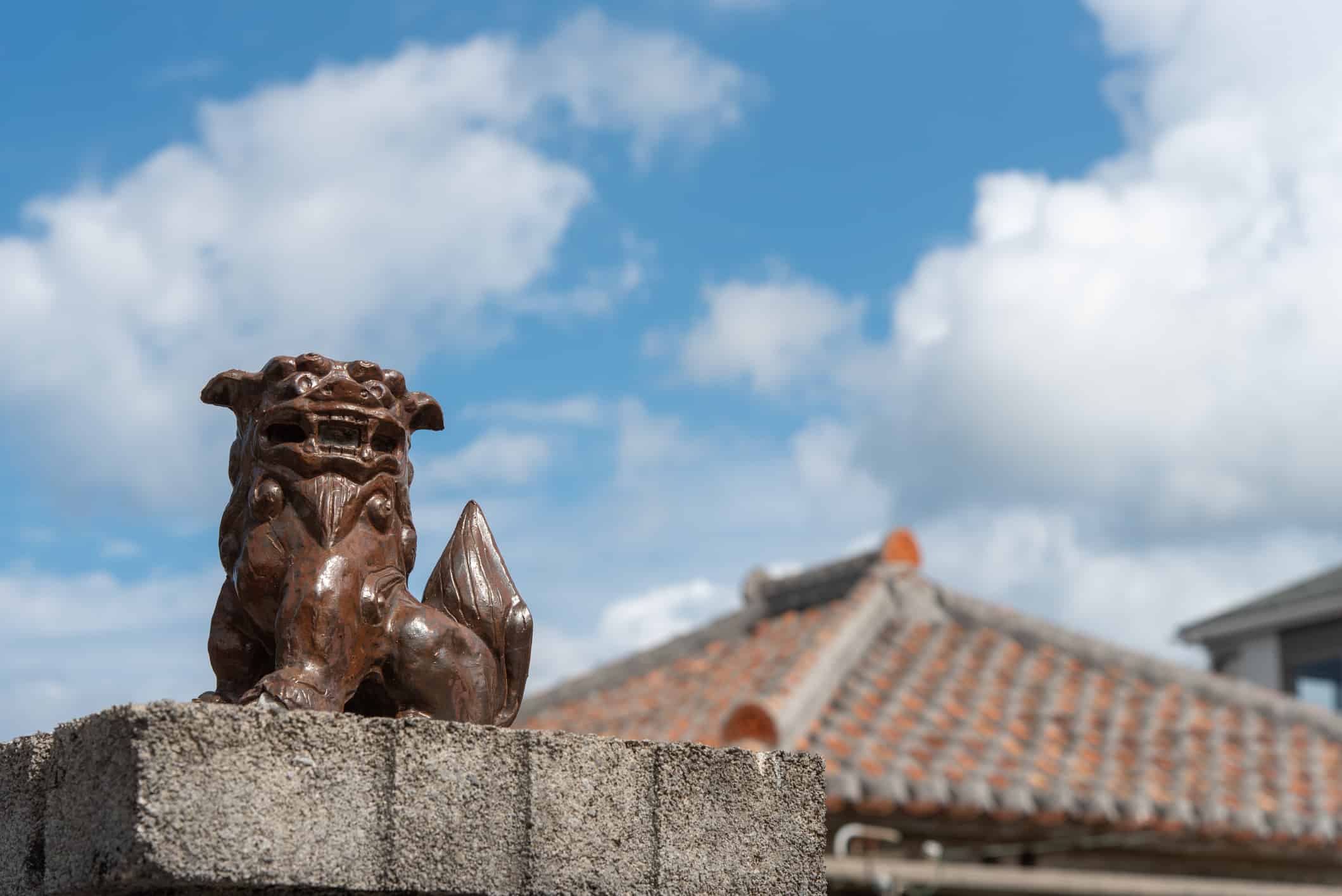
Shisa statues are prominent across Asia as a means of protecting the occupants from harm.
©tacamuro/iStock via Getty Images
A golem guardian monster of Okinawa legend, King Caesar or King Shisa is based on the actual legend of Shisa in Japanese culture. A Shisa is a lion-dog chimera that protects people from misfortune and harm. They are popular in Japanese artwork and architecture, depicted with open and closed mouths. China’s version of a Shisa has more lion aspects. King Shisa is another ally and enemy of Godzilla, originally helping him defeat the first MechaGodzilla.
Titanosaurus
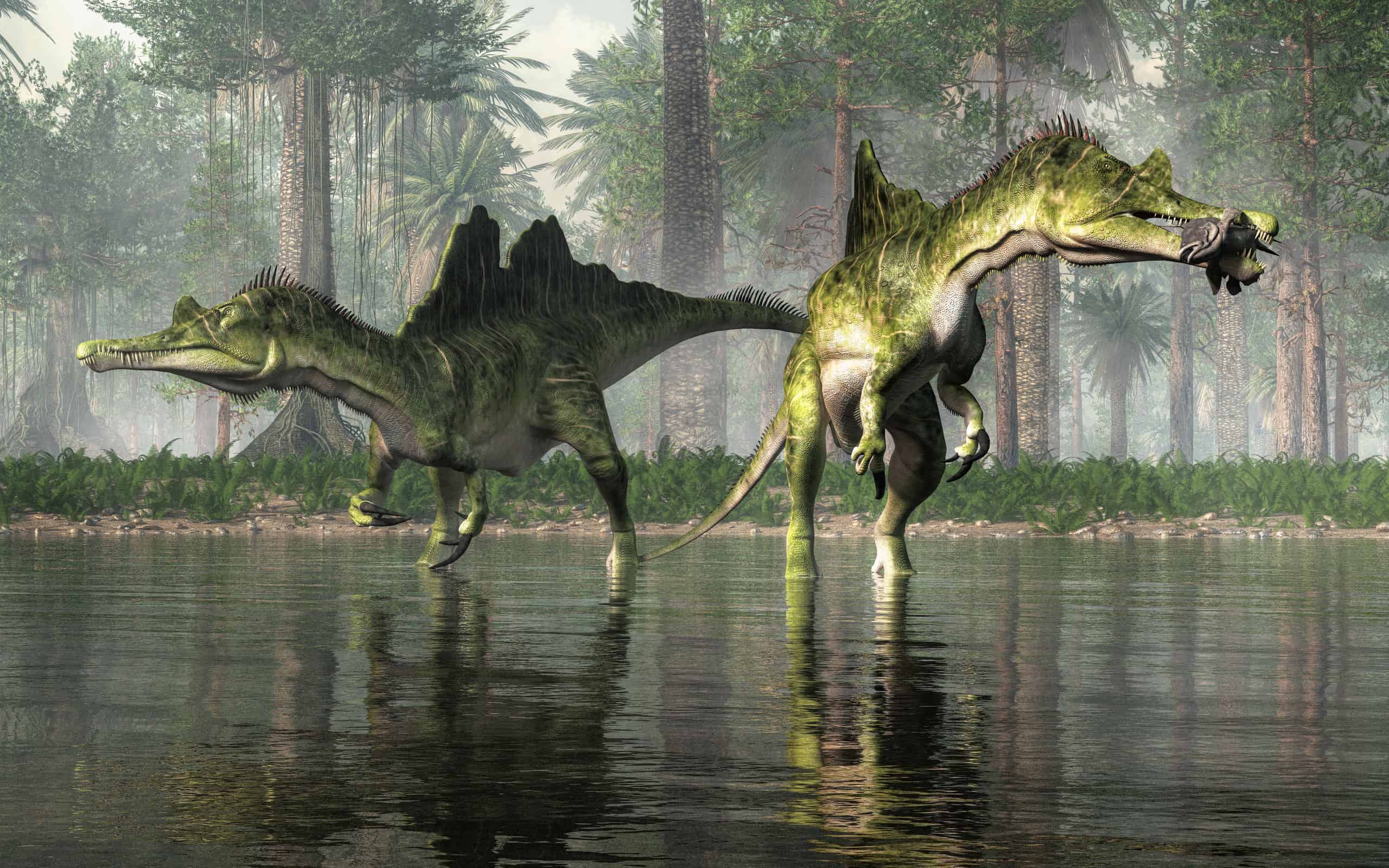
Spinosaurus have powerful jaws and loved living near water to fish.
©Daniel Eskridge/Shutterstock.com
Normally, Titanosaurus is a peaceful kaiju that lives underwater and does not interact with anyone. However, a vengeful scientist learned to control it and used Titanosaurus to work with a rebuilt MechaGodzilla to fight Godzilla.
Titanosaurus has a name similar to Titanosaur, a sauropod and one of the largest dinosaurs to ever live. But the similarities end with the name. Titanosaurus is a biped and lives underwater, while Titanosaurs live on land and in herds.
Titanosaurus is most closely related to Spinosaurus or suchomimus, swimming dinosaurs that were partially aquatic with powerful hind legs and tails.
Varan

Sugar gliders are adorable exotic pets, but they are prone to separation anxiety.
©Arif Supriyadi/Shutterstock.com
Not prominent in the franchise, Varan is an interesting kaiju who makes appearances in several video games. He also stars in his own movie, Varan the Unbelievable. Varan only cameoed in one movie with Godzilla, Destroy All Monsters.
Varan is a reptilian flying squirrel or sugar glider, using its wings to glide over mountains while using its claws to cling to ledges or swim in lakes.
Megaguirus
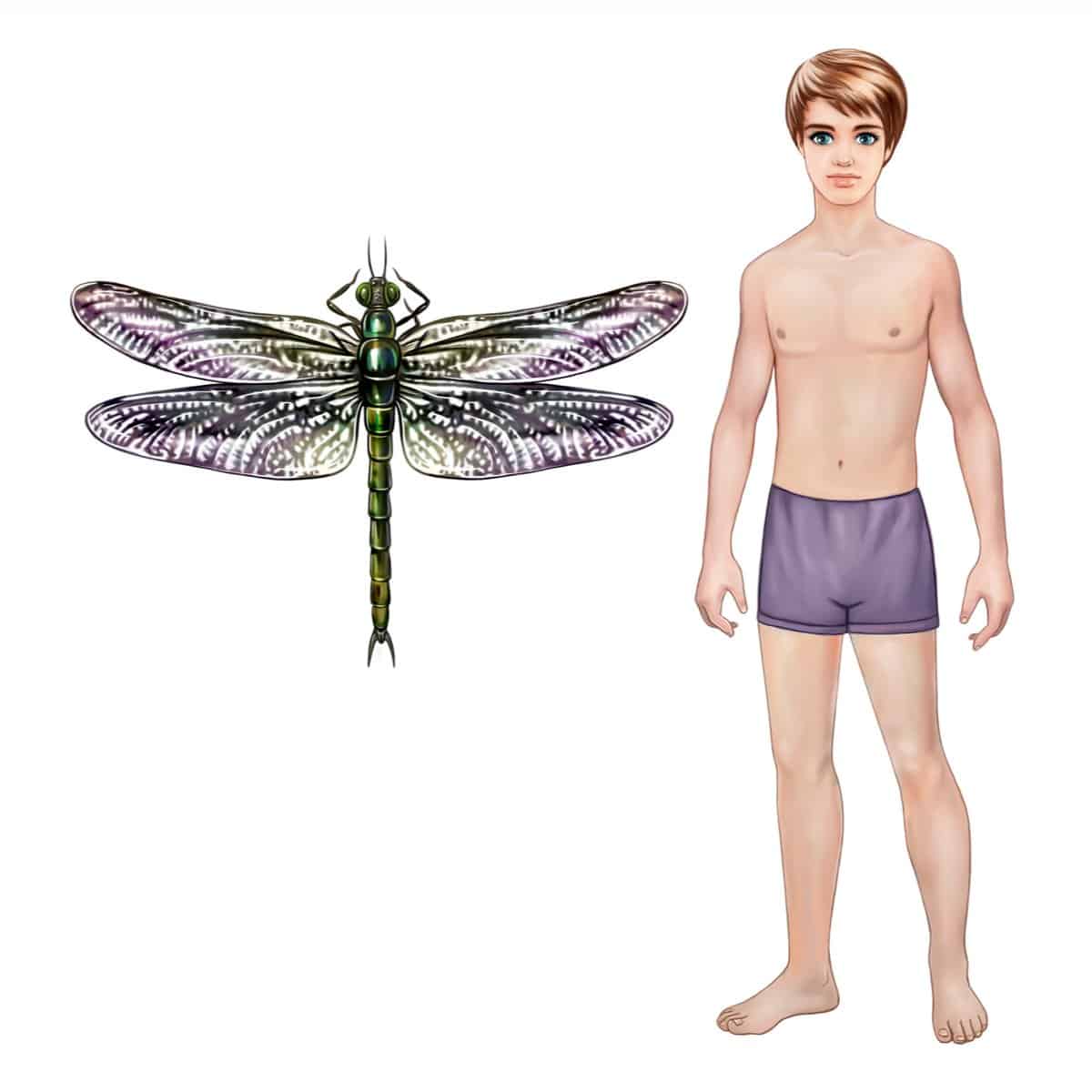
Giant dragonflies existed many years ago and they were as aggressive as Megaguirus.
©Liliya Butenko/Shutterstock.com
Megaguirus is the queen of a swarm of meganula, prehistoric dragonfly monsters that survived to the modern day. The swarm attacked Godzilla, fed off his nuclear energy, and gave it to Megaguirus who attacked Godzilla for dominance. Megaguirus is a giant, mutated version of the now-extinct prehistoric dragonfly, Meganeuropsis permiana. This ancient dragonfly was 2.5 feet long.
MUTO

The MUTO’s are a combination of several beetles, which were effective opponents for Godzilla.
©Chase D'animulls/iStock via Getty Images
MUTO is an acronym for Massive Unidentified Terrestrial Object. Appearing in the 2014 Godzilla movie, the first of the Monsterverse series, MUTO was the main antagonist of the series. As the film progressed, a male and female MUTO proved capable of overpowering Godzilla, nearly defeating him if not for human intervention. The MUTOs have the unique ability to generate an electromagnetic pulse capable of disrupting all electrical systems in an area.
The MUTOs are insectoid kaiju, referencing several types of animals in their biology. These animals include:
- Beetles: hard carapace, multiple legs, ability to dig
- Arachnids: dimorphism with the female having eight legs and a larger body than the male
- Pterodactyl: male MUTO have large dinosaur-like wings
- Parasitoid Wasps: The skeleton of a deceased Godzilla indicates eggs of MUTO were laid inside it and fed on its nuclear energy, similar to wasps laying eggs inside other animals
Behemoth
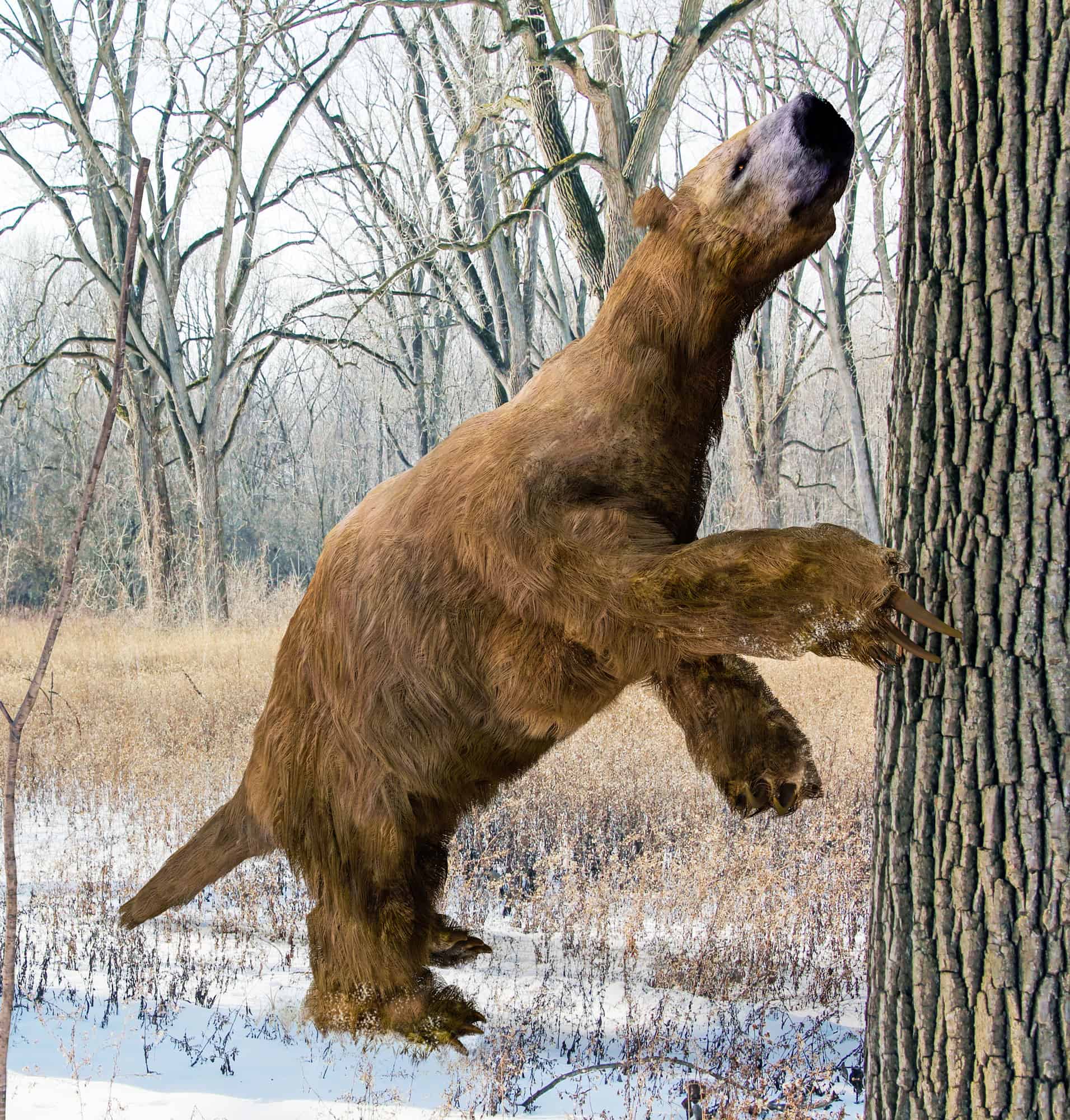
Giant sloths went extinct many years ago near the same time as mammoths.
©Aunt Spray/Shutterstock.com
Behemoth is one of the large titans in the Monsterverse, quietly hibernating until Ghidorah woke it up with an alpha call. It does not do much in the movie, but it is very popular among the fanbase because of its peculiar physiology.
Behemoth is named after the biblical monster of the same name, born to defeat Leviathan, its sea counterparty.
In the movie, Behemoth is a combination of:
- Giant sloth – body type, hair
- Mammoth – size, strength, tusks
- Gorilla/ape – knuckle-walking
Methuselah

Several creation myths tell that the world formed on the back of a giant turtle.
©iStock.com/Sista Vongjintanaruks
Named after the oldest living man in the Bible, Methuselah is a massive quadruped that hibernates for thousands of years. As such, mountains and civilizations grow on their backs without anyone noticing. Methuselah does little in the 2019 movie King of the Monsters, but Legendary promotes Methuselah, Behemoth, and new monsters on social media and their website to keep fans engaged. There is no direct correlation to what this animal is based on since it is mostly covered in mountains and vegetation. The closest approximation to it based on habitat and lifestyle is sloth, turtle, and tortoise. It also possesses large elephant-like tusks on the sides of its face.
Warbat

The warbats are a combination of flying pythons, cobras, and boa constrictors.
©Michael Allen Smith from Seattle, USA, CC BY-SA 2.0 - License
Warbats, or Nozuki, are giant flying snakes living in the Hollow Earth. They are fierce predators, capable of ambushing unsuspecting prey or suffocating larger prey by wrapping their coils around them and using their wings to deprive their prey of air. The Warbats were defeated through brute force by Kong. Warbats are large, primary versions of flying snakes. They have large fangs like pythons and are capable of constricting their prey like boa constrictors. They have bat-like wings.
Doug

Doug was adopted into the
Monsterversebecause fans found him adorable.
©Vinod Ulahannan/iStock / Getty Images Plus via Getty Images
Finally, the fan favorite of the Monsterverse is Doug. Doug has no significant role in the 2021 Godzilla vs. Kong movie, outside of being a monster residing in the Hollow Earth. He is simply a giant iguana-like kaiju with the tail spikes of a stegosaurus and the hide of a crocodile.
The photo featured at the top of this post is © Phoenix Pixels/Shutterstock.com
Thank you for reading! Have some feedback for us? Contact the AZ Animals editorial team.






